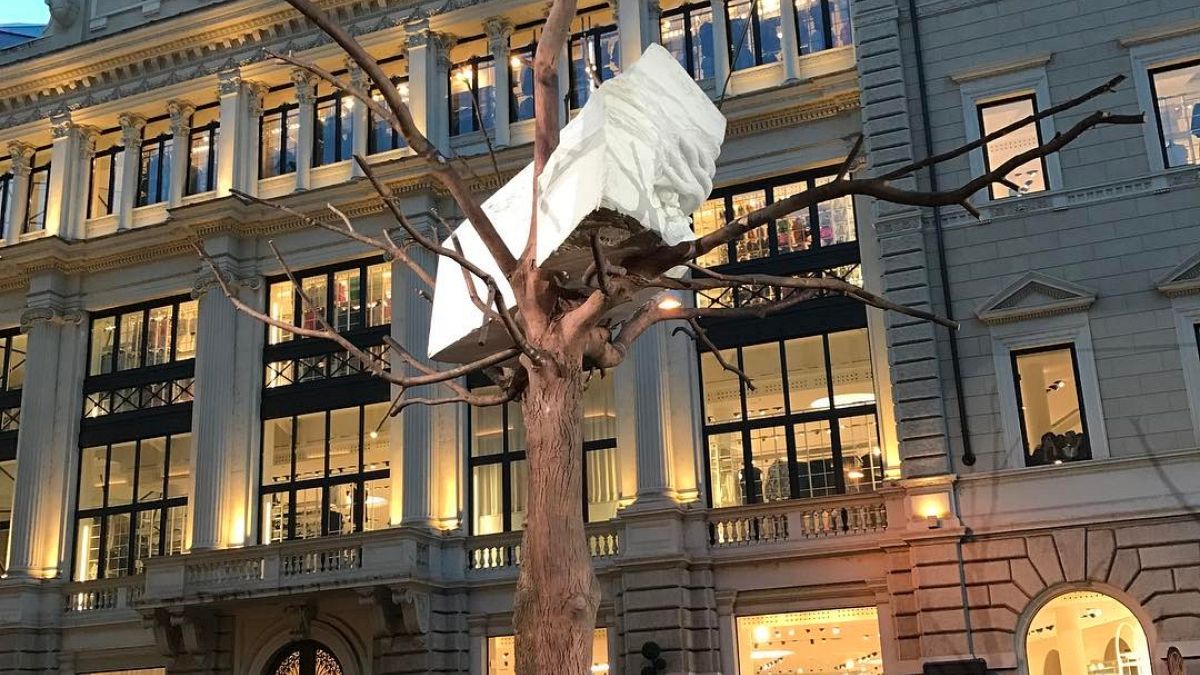A sculpture donated by the fashion house Fendi was given to the city of Rome.
On Monday, a sculpture donated by the fashion house Fendi was given to the city of Rome. “Leaves of Stone” by Italian artist Giuseppe Penone is Fendi’s way of trying to “Give back to the community, to give thanks”, said Pietro Beccari, chief executive of the brand.
The sculpture, made of bronze and found stone is representative of the way our body and the wider world interact. “A tree trunk of marble, of calcium, encloses, in our thought, the carbon, the plant, and the plant the camouflage of the colour of the bronze, and the colour of the bronze, the green of the foliage and the trees, the flowing of the material, of water, of rivers in which there courses the subterranean life of the world, of the veins whose flow is enclosed in our body as in the marble cave of the mountains” Penone explained.
The relationship between Rome and modern art has always been uncertain, due to Rome’s classical history, but sculptures like these are a step towards acceptance of modern art.
This is not the first time the illustrious Italian house has given back to its home country. In 2012, when Beccari joined the brand, he changed the logo from Fendi to Fendi Roma, a sign of his appreciation of the brand’s heritage.
Une publication partagée par Fendi (@fendi) le 22 Mai 2017 à 13h57 PDT
In November 2015, the Trevi fountain reopened after a €1.9 million Fendi-funded restoration was completed. Beccari said that funding the restoration was a “gesture of [the brand’s] love” for Italy and Rome.
Fendi is not the only Italian brand to support its cultural heritage. In September of last year, Rome’s Spanish Steps reopened after Bulgari spent €1.5 million restoring them, while leather brand Tod’s is behind a long-term clean-up of the Colosseum. Jean-Christophe Babin, chief executive of Bulgari, said that it was their obligation to give back to the city where they came from. In Florence, Ferragamo spent €600,000 on restoring the Uffizi Gallery, and Gucci €340,000 on the restoration of ten 16th century tapestries.
While it may appear that these brands are doing their best to support their past, these projects also have benefits for them. Not only do these benefits include press coverage, publicity and potential tax advantages, due to the 2014 ‘Art Bonus’ law, there have also been reported cases where they have given the brands more say over their use. Bulgari’s flagship store is at the base of the Spanish Steps, and chairman of LVMH, the company that owns Bulgari, suggested in September 2016 that the steps could be fenced off at night to avoid people using them in the wrong way.
Une publication partagée par Fendi (@fendi) le 22 Mai 2017 à 10h23 PDT
Either way, across the board, brands have to be more aware of their cultural heritage, and more respectful of the heritage of others. Amidst constant cries of cultural appropriation, brands have repeatedly been in trouble for not being respectful of other cultures. There was a widespread outcry against Chanel’s SS17 pre-collection, which sports a wood and resin boomerang for £1,130. The brand was accused of being ignorant of Aboriginal culture, where the object originates from. Marc Jacobs’ SS17 show last September caused an uproar when he sent models down the catwalk with multi-coloured dreadlocks. It was said that he had been insensitive to the origin of dreadlocks and was appropriating them insensitively for his own gain.



